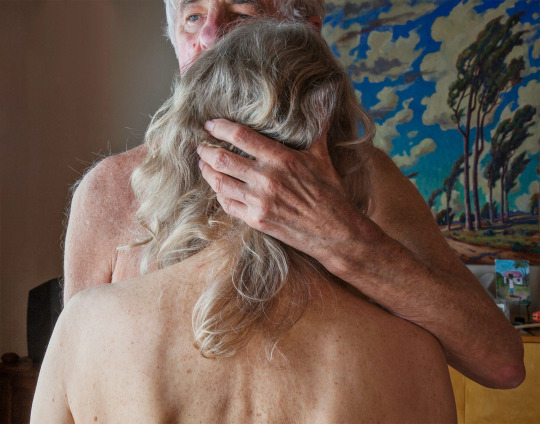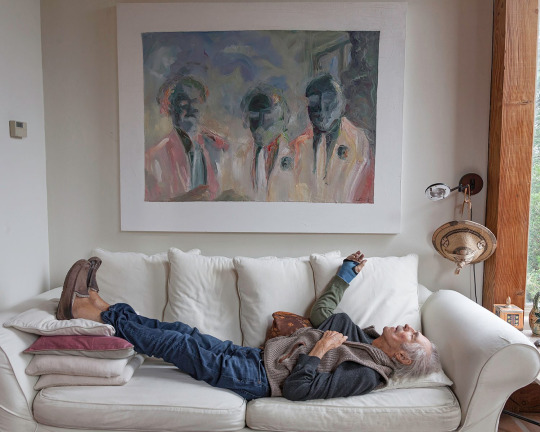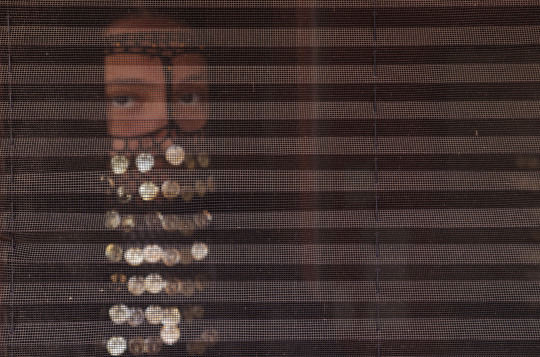Don't wanna be here? Send us removal request.
Text
A6: Social Inequality in Cairo: Luxury Real Estate Billboards

Project Statement:
Social Inequality in Cairo: Luxury real estate billboards photo series is a project in which I took photographs of billboards around New Cairo and El Thawra Street. Since I moved to Egypt two years ago, I couldn’t help but notice the socioeconomic difference between New Cairo (the 5th settlement) and the rest of the city, especially in housing. There are housing compounds all over the area, creating bubbled communities out of touch with the reality of life in Cairo and Egypt in general, with the government turning a blind eye to the housing crisis in the city. It’s ironic seeing people in the shade of giant compound billboards waiting for their 4-pound microbuses knowing they’re not the audiences for those advertisements. My work was inspired by My professor’s suggestion of Taryn Simon’s American Index of Hidden and Unfamiliar project, where she reveals some hidden and out-of-view details within the united states borders. In my project, I show giant billboards from New Cairo and Thawra Street and caption them with interesting information about housing inequality in Egypt.

Social inequality in housing is a serious problem in Egypt since there is a wide disparity in access to housing between the wealthy and the poor. The underprivileged reside in slums such as the City of the Dead without access to basic amenities like sanitary facilities and clean water. In contrast, the wealthy reside in gated communities (compounds) with services such as gyms, security, and sometimes education. This exacerbates social segregation between social classes and leads to a lack of empathy and complete detachment between social groups.

Investment spending in the housing sector has increased dramatically over the preceding eight years, increasing by 508% to E£614 billion (US$32.66 billion), compared to 2006-2007 and 2013-2014. The yearly public investment in the sector has increased by 847 percent from E£19 billion (US$1 billion) in 2013/14 to E£180 billion (US$9.6 billion) in 2021/22.

The need for new housing increased to 300000 units annually, with an extra 254000 units to gradually address given the backlog, according to a World Bank research in 2014. Housing demand is anticipated to reach 700000 per year in 2022. High-interest rates and outdated, ineffective housing policies have an impact on home availability as well. The population is expected to reach 132 million by 2023, and with this population growth, the housing deficit will increase more.

Prices for affordable housing units range from £400,000 to £450,000. Homes can cost up to £1.7 million ($90,416 U.S.).Low-income borrowers can borrow 90% of the property's worth, whereas middle-class borrowers can borrow 85%. Along with the 7.2% unemployment rate in the first quarter of 2022, more than 40% of Egyptians have poor incomes and cannot even apply to buy apartments from the housing projects the government claims to serve.

Millions of Egyptians live in substandard housing conditions, making Egypt the only country in the Middle East with the most unoccupied homes. Over 13 million vacant homes, or 22.7% of all housing units in Egypt, were reported by the Central Agency for Public Mobilization and Statistics, or CAPMAS, in 2019. Most of these homes are owned by wealthy people for investment or vacation purposes, while an estimated 12 million Egyptians live in informal settlements.

The Egyptian government adds to the housing issue by putting the needs of wealthy investors to construct opulent resorts and compounds ahead of all other interests. The government's construction strategy is centered on luring private investment, which accounts for 71% of the housing market, and aiming for big profits by building luxurious residences for a specific socioeconomic class that accounts for a very small percentage of the country's population.

According to a recent survey, only 40% of Egyptians own the homes they live in, although the country's real estate market has increased by 420% since 2001. However, the analysis finds that the private sector made 95% of all real estate investments during that time. While this was happening, the population did not grow by more than 22% (from 66.14 million in 2001 to 80.72 million in 2012).

The Egyptian government implemented several housing projects to provide subsidized housing for less privileged families; however, most projects are inefficient in reaching the most vulnerable populations. The government needs to determine the concentration of the investments towards providing the average Egyptian citizen with their inherent right to housing rather than pouring money into residential communities catering to the wealthy of the country.
0 notes
Text
Sally Mann's Disturbing Photographs: The Immediate Family
Sally Mann is a known photographer born and raised in the south of the United States in Lexington, Virginia, which she describes as “being nourished and wounded by the experience” (Widewalls, 2023). One of her major photography works that caused controversy is her work on family portraits titled “Immediate Family,” where she published a series of intimate photographs of her three children, Emmett, Jessie, and Virginia, taken between 1984 and 1991.

The canon of the photo series is similar to the work of Edward Weston and Margret Cameron (Publicdelivery, 2019). The book produced in 1992 by Saly Mann triggered controversy because it exposes the intimacy around children, conveying sensual beauty and grains of discomfort and violence (Widewalls, 2023). One of the famous photos is of one of her female kids lying naked after wetting the bed. Another one is of Jessie in a white dress holding a cigarette.


Critics accused Sally Mann of sexualizing her children and breaking their privacy, especially since they are underage and not mature enough to be fully aware of their consent. Even a group called “Save The Children” organized a book burning and considered the book a form of child pornography. Still, Sally Mann’s response described back then children's sexuality as an “Oxymoron” (Publicdelivery, 2019). Sally Mann’s point was to raise awareness and tell the public about the overlooked details of motherhood that are not flattering in many cases and let her children act and have a say in ways perceived as taboo, unorthodox, and adult-exclusive by society.
Sally Mann’s photos raise questions about the ethical limitations of photographs and what it takes to take intimate photos of kids. In the case of Mann, her children had agency and consent to take the photos. They even pointed out and suggested ways of taking a photograph, and they had the choice to refuse to publish some photos as they were concerned about being portrayed as “Geeks”(Publicdelivery, 2019). Although receiving lots of public hate and scrutiny, Mann’s kids were not uncomfortable with the nudity. As mentioned in the article published by Time Magazine in 1992 and during Mann’s opening in the Houk Friedman Gallery in New York, the children looked comfortable and answered guests' questions (Woodward, 1992). They were the ones who encouraged their mother to publish the book.
Despite the controversy, Sally Mann remains an accomplished photographer with several other projects. For instance, those featuring the landscape south of the American land and the former civil war battlefields (Widewalls, 2023).

References
5 most important themes in the photography of Sally Mann. Widewalls. (n.d.).
Publicdelivery. (2019, December 16). Why was Sally Mann’s immediate family so
controversial? Public Delivery – Art non-profit. https://publicdelivery.org/sally-mann-immediate-family/
Woodward, R. B. (1992, September 17). The disturbing photography of Sally
Mann. Edwynn Houk Gallery. https://www.houkgallery.com/news/187-the-disturbing-photography-of-sally-mann-sally-mann-in-the-new-york-times/
6 notes
·
View notes
Text
“Ways of Seeing,” a BBC series by John Berger
In his series, “Ways of Seeing,” John Berger challenged the elitist way of looking at Art without considering the political, cultural, and social circumstances that led to that way of depiction and looking. The series was four episodes broadcasted and produced by the BBC in 1972, in which John Berger tells the viewers about the uncovered context of the artworks of Leonardo Da Vinci and Caravaggio and analytically calls out the exploitation and ideology behind them and their relation to patriarchy and capitalism (Liang, 2022).

Berger pushes the viewer to avoid being a passive consumer of high culture and rather become a critique of the paintings and images that were overly romanticized (Graf, 2023). He empowers the viewer to use their “eye” and “I” to observe how the paintings were made for the elite and high class according to their preferences and what they wanted to see. I watched some of the episodes of this series for one of my classes. Still, my favorite episode in this series was about the nude. It was titled “The Female Nude and the Male Gaze,” where he explained the difference between being naked and nude is agency and autonomy. Being naked is being by yourself, while being nude is being seen naked by others, which was dominant in many paintings

The nude images and artifacts of the Renaissance paintings are the gaze of the men (whether those in power/ clients of the artist or the artists themselves) and their fantasies of sexuality and objectification of women. “You painted a naked woman because you enjoyed looking at her, you put a mirror in her hand, and you called the painting Vanity, thus morally condemning the woman whose nakedness you had depicted for your own pleasure. (Berger, 1972 as cited in Liang, 2022).” Later in the episode, he discusses with a group of women to get their thoughts and reflections on the paintings and the ideologies behind them as a counteract of the passiveness of the women depicted in the paintings.

John Burger was born in London in 1926 and was a novelist and art critic. Some of his writings are “ The New Society” and “The New Statesman.” After broadcasting the series “Ways of Seeing,” he later wrote a book with the same title, moved to France, and died in 2017 at 90 years old (Graf, 2023). “Ways of Seeing” remains a salient reference for studying and analyzing art history, and Tom Lubbock described the series as “Groundbreaking for its time. (Graf, 2023)”
References
BBC. (2008). Ways of Seeing: The Female Nude and The Male Gaze. YouTube.
Retrieved May 22, 2023, from https://youtu.be/u72AIab-Gdc.
Graf, S. (2023, March 25). What can you learn from John Berger’s ways of seeing?
TheCollector. https://www.thecollector.com/what-can-we-learn-from-john-berger-ways-of-seeing/
Liang, O. (2022, January 17). Ways of seeing at 50: How John Berger’s Radical
TV series changed our view of art. The Guardian. https://www.theguardian.com/books/2022/jan/17/ways-of-seeing-at-50-how-john-bergers-radical-tv-series-changed-our-view-of-art
4 notes
·
View notes
Text
The civil contract of photography, Ariella Azoulay
The civil contract of Photography is a book by Ariella Azoulay. She examines the relationship between photography and citizenship in crisis contexts and showcases photography as a space for political relations not sovereign by a regime (Pajo, 2023). Azoulay tries to understand the relationship between the photographed individual and the photographer through ethical and political lenses and between the guilt and empathy towards the subjects and the violence the camera exerts on those it’s directed to(Azulai, 2008). She argues that any stateless person addressed by a camera of photographs possesses the right to be a member of the citizenry of photography. Azoulay defends her points by referencing “disasters of recent history” and how the victims, Palestinian citizens and women in Western societies, are depicted in the photographs and asks a salient question: “Under which legal, political, or cultural conditions does it become possible to see and to show disaster that befalls those flawed citizens in states of exception? (Azoulay, n.d).” Azoulay analyzes violent photographs of the Israeli press in her books and other images of Muybridge to photos from Abu Ghraib prison. Azoulay examines the visual landscape of tragedy, injustice, and misery in our time by drawing on such foundational texts in the history of modern citizenship as the Declaration of the Rights of Man and pertinent writings by Giorgio Agamben, Jean-François Lyotard, Susan Sontag, and Roland Barthes.


References
Azoulay, A. (n.d.-a). Ariella’s cargo.
Azoulay, A. (n.d.-b). The Civil Contract of photography by Ariella Azoulay. LensCulture.
Azulai, A. (2008). The Civil Contract of photography. Zone Books.
Pajo, J. (2023, April 15). The Civil Contract of photography. ROROTOKO.
3 notes
·
View notes
Text
Assignment 6 part 1 and 2
Part 1: Comparing photo projects
The two projects I am comparing are “A Day in a single mother’s Life” by Marina Salama from the Cairo Student Photography website and “Time as we know it,” a project by Marna Clarke from the Lens Culture competition winners' critics' choice 2022. In the first project, Salama spends a day with a single mother and her son and photographs how their day goes and their connection (Figure 1). In her photo essay project, which falls under the documentary photography genre, Salama talks about how Azza Sultan, the single, divorced mother, had lived with her kid Hazem since 2006 when he got divorced and is in charge of raising him and spending time with him, and how she and her son live in the same neighborhood with her ex-husband and his wife and kids (Salama,(n,d)).

Figure 1: Hazem and his mom Azza looking from the balcony of their house, Marina Salama.
In the second project, the photographer Marna Clarke shares intimate portraits of her an 81 years old wife and her husband, who is 92, as they experience getting old with all its physical and psychological challenges (Figure 2) as an attempt from the photographer to deal with “the inevitability of aging and dying by bringing attention to it and accepting it.” (Clarke,2022)

Figure 2: “Embrace Igor holding me gently, 2013, Marna Clarke.” (Clarke,2022)
The two projects are similar. They are both photo essays that tell the story of two people going through an experience together at the same time and are there for each other, whether it is being a single mother responsible for a kid (Figure 3) or an aging couple where the wife gets old with her husband gracefully (Figure 4). Both topics are taboos and unusual and shed light on subjects one discusses.

Figure 3: Azza’s son Hazem on his laptop. He is an introvert who likes to spend time alone, Marina Salama.

Figure 4: Igor on Sofa Under Painting. Igor resting with legs and casted arm up underneath one of his paintings, 2021. (Clarke,2022)
The difference between them is in style and how each photographer chose to approach their topic. Marina’s photographs are raw, unorganized, and maybe not visually appealing. They are picturing the subjects’ life the way it is, which tells us more about them, where and how they live as if the viewer is there (Figure 5). Clarke’s photos are framed well and have esthetically well-done exposures in colors and light (Figure 6). They focus on the old couple and how their bodies experience aging more than their environment and lifestyle. One thing that could have been done better in the first project is to have captions under each photo to allow more understanding and contextualization of the photo.

Figure 5: Items from Azza and Hazem’s house, Mirna Salama
Figure 7: “My legs in the morning light, Clarke, 2020” (Clarke, 2022)
Part 2: Proposal
My final project is entitled Egypt and Masr. I will shed light on social differences and inequality in the country. Since the day I stepped into Egypt, I noticed how different is Tagamo3 lifestyle than other parts of Cairo. It is either expensive places with costly lifestyles or other areas of the city that are underdeveloped and have a completely different lifestyle. It is almost like two worlds, and each is the opposite. The first one is Egypt, in English referring to the modernization and the social class that characterizes it. The second is Masr, in Arabic, referring to the country in North Africa still struggling with uneven development.
The value of the project is in how it focuses on a taboo phenomenon, and both sides are detached from each other; therefore, I want to photograph that detachment. This may have been done already, but I believe it is an alarming phenomenon in Cairo, and we must discuss it and document it through photography. The genre is documentary photography, and the project will be a photo essay as I’m telling the story of how two-faced Cairo is and the gap between social classes. The photos will be colored, with no writing on them. They will be a mix of portraits and landscapes from different parts of Cairo addressing the topic in daylight and at night. The establishing shot will be a photo of the city from Cairo Tower.
References
Clarke, M. (2022). Time as we know it - photographs and text by Marna Clarke.
LensCulture. https://www.lensculture.com/articles/marna-clarke-time-as-we-know-it
Salama, M. (n.d.). Marina Salama. student photography
PROJECTSDEPARTMENT OFJOURNALISMAND MassCOMMUNICATIONAMERICANUNIVERSITYIN CAIRO. https://cairostudentphotography.weebly.com/marina-salama.html
2 notes
·
View notes
Text
Assignment 5 Photo research

“Puerto Rican woman with a beauty mark,” Diane Arbus, 1965
The photograph I chose for this assignment is captioned “Puerto Rican woman with a beauty mark N.Y.C.,” taken by the photographer Diane Arbus in 1965. The original photograph's dimensions are 26 x 25.9 cm (10 1/4 x 10 3/16 in.) (TheMet, 2023). The photo features the face of a lady with a 60s hairstyle look, wearing a scarf and excessive makeup. She also has two beauty marks on the left side of her face, one by her mouth and the other on the outer side of her eye close to her hair. The photo was taken outside in natural light using a 55 cm focal length. The photographer's point of view is eye-level or slightly down, usually used for portraits, as in the photo. The photographer, Diane Arbus, is one of the famous portrait photographers known for capturing weird and creepy-looking subjects. She was born in 1923 to a wealthy family which explains her ability to access photography then (Artnet, 2023). She lived through the great depression, and being surrounded by privilege during a time when most people struggled made her feel like “being a princess in some loathsome movie…and the kingdom was so humiliating,” as she stated (Clifford, 2023). Arbus was introduced to photography by her husband, whom she divorced later but continued working on her photographs. She began her journey at 39 in 1962, taking photos of those living on the city's margins, such as clowns, exotic dancers, transgender, and mentally unstable people (Artnet, 2023). She took her life later in 1971 but left a series of photographs that, even though found disturbing by many critiques, reflected her try to shed light on the outcasted ones and capture “the space between who someone is and who they think they are” (DeCarlo, 2004).
References
Artnet. (2023). Diane Arbus. Artnet.com. Retrieved April 30, 2023, from
Clifford, B. (2023). Diane Arbus: Moma. The Museum of Modern Art. Retrieved April
30, 2023, from https://www.moma.org/artists/208
DeCarlo, T. (2004, May 1). A fresh look at Diane Arbus. Smithsonian.com. Retrieved
April 30, 2023, from https://www.smithsonianmag.com/arts-culture/a-fresh-look-at-diane-arbus-99861134/
The met. (2023, January 1). Diane Arbus: Puerto Rican woman with a beauty mark,
N.Y.C. The Metropolitan Museum of Art. Retrieved April 30, 2023, from https://www.metmuseum.org/art/collection/search/263293#:~:text=Diane%20Arbus%20%7C%20Puerto%20Rican%20woman,The%20Metropolitan%20Museum%20of%20Art
Remake of the photo

2 notes
·
View notes
Text

A4: Frame in frame

A4: Negative space

A4: Light direction

A4: Shape

A4: Texture

A4: Color

A4: Rule of thirds

A4: Portrait

A4: Portrait

A4: Portrait
Reflection:
Now that we are halfway through the course, I realize I’m a slow learner. Since we started the assignments, I was always the last to get the hang of it. I embrace that. I understand that I need time to process the task, figure out the best way, and, most importantly, get inspired. Seeing my classmates' photos gave me an idea of what I should look for in whatever I see. It taught me that an excellent photo is that of the ordinary and the usual that the average person overlooks and how the camera and the eye of the photographer turn it into a piece of art that projects and triggers feeling and make those indifferent stop and look. Once I immersed myself in the assignment, I started seeing amazing compositions in the dry tree behind my dorm room and all over campus, which I used to describe as uninspiring. It might be, and going out there more would have provided me with better compositions; however, I believe and might be wrong that good photographer works with whatever they have and wherever they find themselves. Now I’m not referring to myself as a good photographer because I’m way far from that, but I’m satisfied with taking most of my photos on campus. Lying down, running bare feet, bending, and squeezing my eyes to take a good shot made me look like a maniac and get stairs, but it was so much fun, and I enjoyed it so much! The continuous feedback on tumbler was very helpful in getting valuable insight and working better. I loved this assignment!
0 notes
Text


This is not related to the assignments, but my friends were trying to recreate one of those family photos, and I liked it.
2 notes
·
View notes
Text





Color?
I was invited to Iftar and got obsessed with that plate hahahaha

2 notes
·
View notes
































